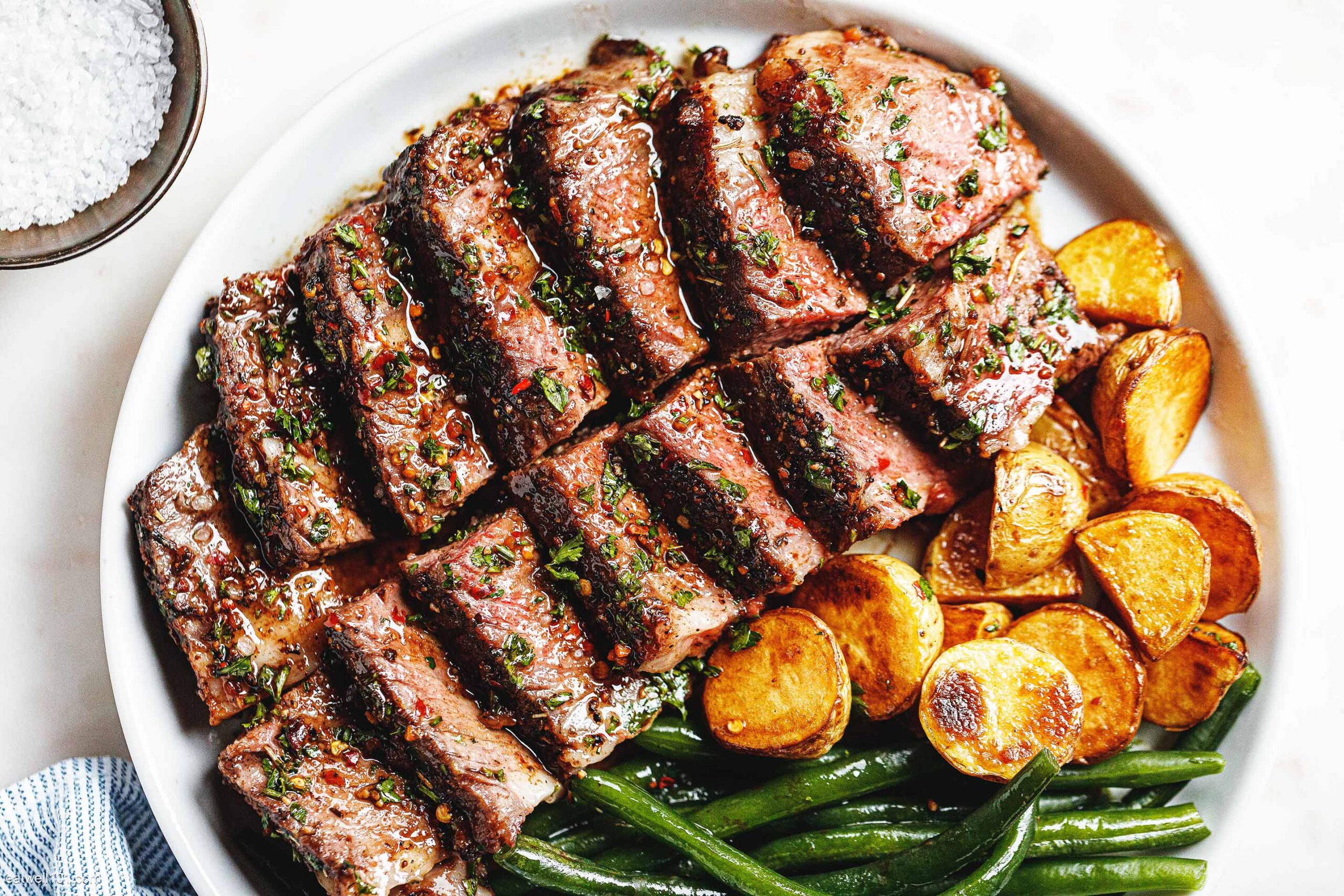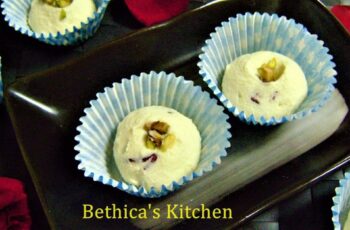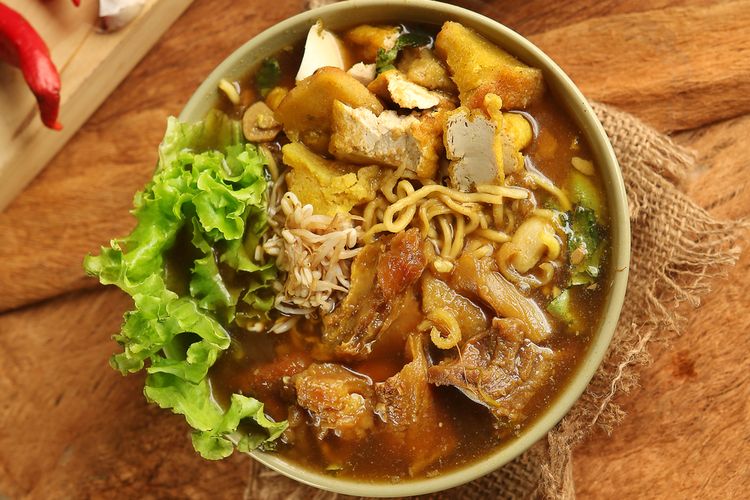
Of course. Here is a 1,200-word article about Tahu Campur.
Tahu Campur: A Savory, Soulful Symphony from the Heart of East Java
In the sprawling, energetic cities of East Java, as twilight surrenders to the electric hum of the evening, a particular aroma begins to weave its way through the bustling streets. It’s a complex, deeply savory scent—a tantalizing fusion of simmering beef, pungent shrimp paste, and fragrant spices. This is the call of the Tahu Campur vendor, a culinary maestro preparing what is not merely a dish, but a cherished institution, a comforting embrace in a bowl.
Tahu Campur, which translates literally to "Mixed Tofu," is a name of profound understatement. To call it simply "mixed tofu" is akin to calling a symphony just "mixed sounds." This iconic Indonesian dish, with its heartland in cities like Surabaya and Lamongan, is a masterful composition of textures, temperatures, and tastes that tells a story of place, history, and the communal joy of a hearty meal. It is a culinary mosaic, where every piece is distinct yet contributes to a glorious, unified whole.
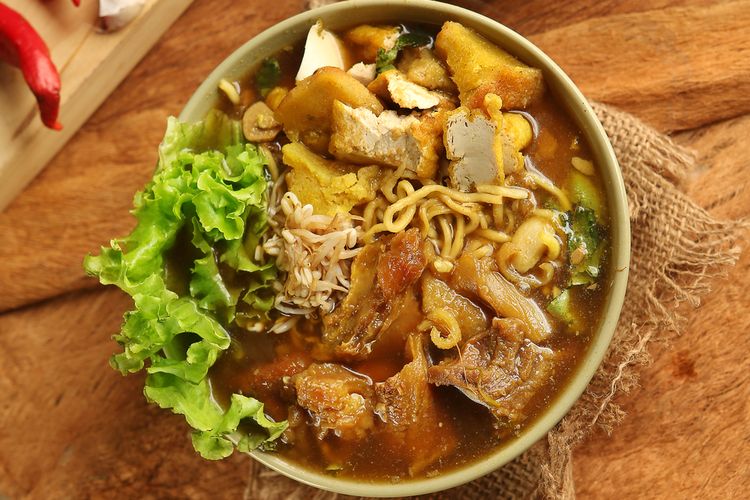
Deconstructing the Masterpiece: The Anatomy of a Perfect Bowl
To truly appreciate Tahu Campur, one must first understand its components, each meticulously prepared and layered to create a harmonious experience. A typical bowl is an edible landscape built upon a foundation of humble yet essential starches. Often, this is lontong, a compressed rice cake steamed in a banana leaf, which provides a neutral, slightly chewy base perfect for soaking up the rich broth. Sometimes, simple steamed rice is used instead.
Upon this foundation, the namesake ingredient arrives: cubes of golden, fried tofu (tahu goreng). Fried to perfection, the tofu boasts a crisp exterior that gives way to a soft, pillowy center. It acts as a sponge, eagerly absorbing the flavors of the dish.
Next comes the protein, which elevates Tahu Campur from a simple snack to a substantial meal. Tender, slow-cooked beef, often brisket or shank, is sliced and added generously. The beef is simmered for hours until it is fall-apart tender, its savory essence infusing the broth it was cooked in. For the more adventurous diner, many vendors also offer jerohan (offal), such as tripe or tendon, which adds a unique depth of flavor and a delightful chewiness.
The crunch and texture are just as crucial. This is provided by two key elements. First, crisp, fresh bean sprouts (tauge) and shredded lettuce offer a cool, refreshing contrast to the warmth of the broth. Second, and perhaps most uniquely, is the perkedel singkong. Unlike the more common potato fritter (perkedel kentang), this version is made from grated cassava. The cassava fritter is dense, slightly sweet, and wonderfully chewy, providing a satisfying textural counterpoint to the other ingredients. Finally, a cascade of crispy krupuk (prawn or garlic crackers) is sprinkled on top, adding a final, audible crunch.

The Soul of the Dish: The Unforgettable Petis Broth
While every component is vital, the undisputed soul of Tahu Campur is its broth, the kuah. This is no ordinary soup. It is a dark, complex, and intensely flavorful liquid, with its defining character derived from one of East Java’s most treasured ingredients: petis udang.
Petis udang is a thick, dark, molasses-like paste made from fermented shrimp or prawns. It is a cornerstone of East Javanese cuisine, imparting a unique flavor profile that is simultaneously sweet, salty, and deeply umami. It’s pungent, powerful, and utterly addictive.
The creation of the broth is a ritual. A spice paste, or bumbu, is made by grinding together shallots, garlic, turmeric, galangal, and other aromatics. This paste is sautéed until fragrant, releasing its potent oils. Then, the star ingredient, the petis, is stirred in, its dark color and rich aroma transforming the base. Finally, this mixture is combined with the savory beef stock in which the meat was simmered. The resulting broth is left to gently bubble away in a large wok, a cauldron of simmering goodness that thickens slightly as the evening progresses, its flavor deepening with every passing hour.
When a customer orders, the vendor ladles this hot, unctuous broth over the carefully arranged ingredients in the bowl. The heat wilts the lettuce and bean sprouts ever so slightly, while the rich, petis-infused liquid seeps into every crevice of the tofu, lontong, and meat.
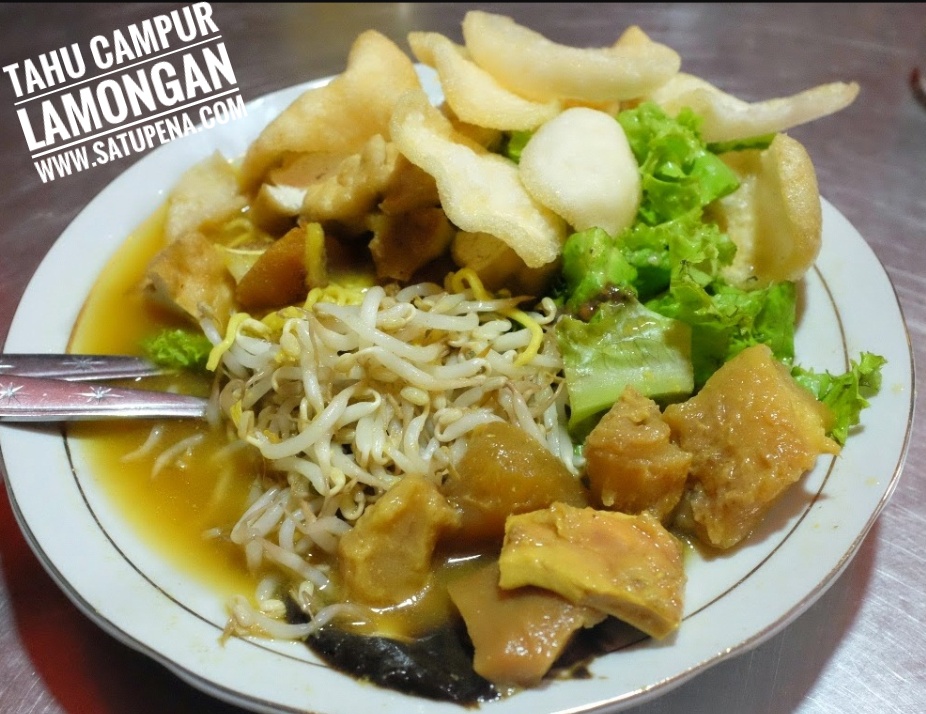
The Vendor’s Dance: A Ritual of Assembly
Watching a seasoned Tahu Campur vendor at work is like witnessing a choreographed performance. Their station, often a mobile cart (kaki lima) or a small, humble eatery (warung), is a model of efficiency. A large wok of broth bubbles gently over a steady flame. Surrounding it are containers holding each ingredient, prepped and ready.
With swift, practiced movements, the vendor begins. The lontong is sliced with a deft hand. The tofu, beef, and perkedel are arranged in the bowl. A handful of fresh greens is added. Then comes the main event: the ladle dips deep into the simmering cauldron and emerges with the dark, fragrant broth, which is poured generously over the entire assembly. For those who crave heat, a dollop of fiery sambal is offered on the side, allowing each person to customize the spice level to their liking. The final flourish is the shower of crispy krupuk, and the masterpiece is complete.
A Taste of Place: The Cultural Significance
Tahu Campur is more than just a recipe; it is a cultural artifact of East Java. Its origins are rooted in the need for a filling, affordable, and flavorful meal for the working class. The combination of cheap protein (tofu), humble starches (rice cake and cassava), and flavorful broth made with long-lasting beef cuts and the ubiquitous petis created a dish that was both economical and deeply satisfying.
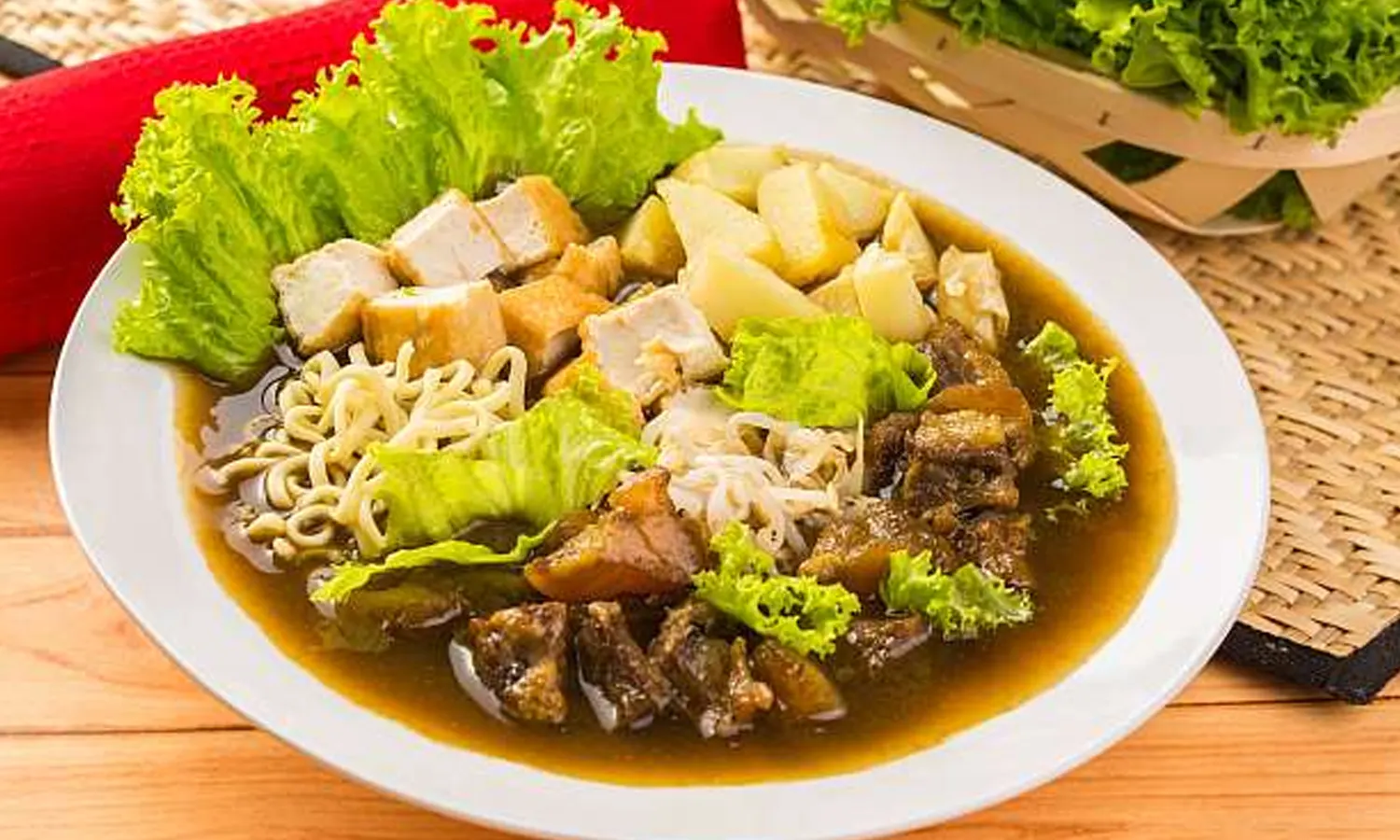
It has evolved into a beloved comfort food, most often enjoyed at night. It’s the meal you seek out after a long day, the perfect supper on a cool, rainy evening, or the social meal shared with friends on plastic stools by the roadside. The experience of eating Tahu Campur is intrinsically linked to its environment—the sounds of traffic, the chatter of fellow diners, the steam rising from the vendor’s cart—all contributing to its unique charm.
While found throughout East Java, slight regional variations exist. The Tahu Campur from Lamongan is often cited as the gold standard, known for its perfectly balanced broth. Surabaya’s version might be slightly sweeter or feature different cuts of meat. Every vendor also has their own secret recipe for the bumbu or a particular ratio of petis to stock, a family secret passed down through generations.
The Complete Experience: How to Savor Tahu Campur
For the uninitiated, the first encounter with a bowl of Tahu Campur can be an exhilarating sensory overload. The key is to embrace its name: campur (mixed). Before taking a bite, use your spoon and fork to gently mix all the ingredients together. This ensures that each spoonful is a perfect microcosm of the entire dish—a bit of tender beef, a piece of broth-soaked tofu, some chewy lontong, the fresh crunch of bean sprouts, and the rich, savory broth tying it all together.
The ideal beverage to accompany this rich dish is something simple and refreshing to cleanse the palate. A tall glass of es teh manis (sweet iced tea) or es jeruk (fresh iced orange juice) provides the perfect sweet and citrusy counterpoint to the deep, savory notes of the petis broth.
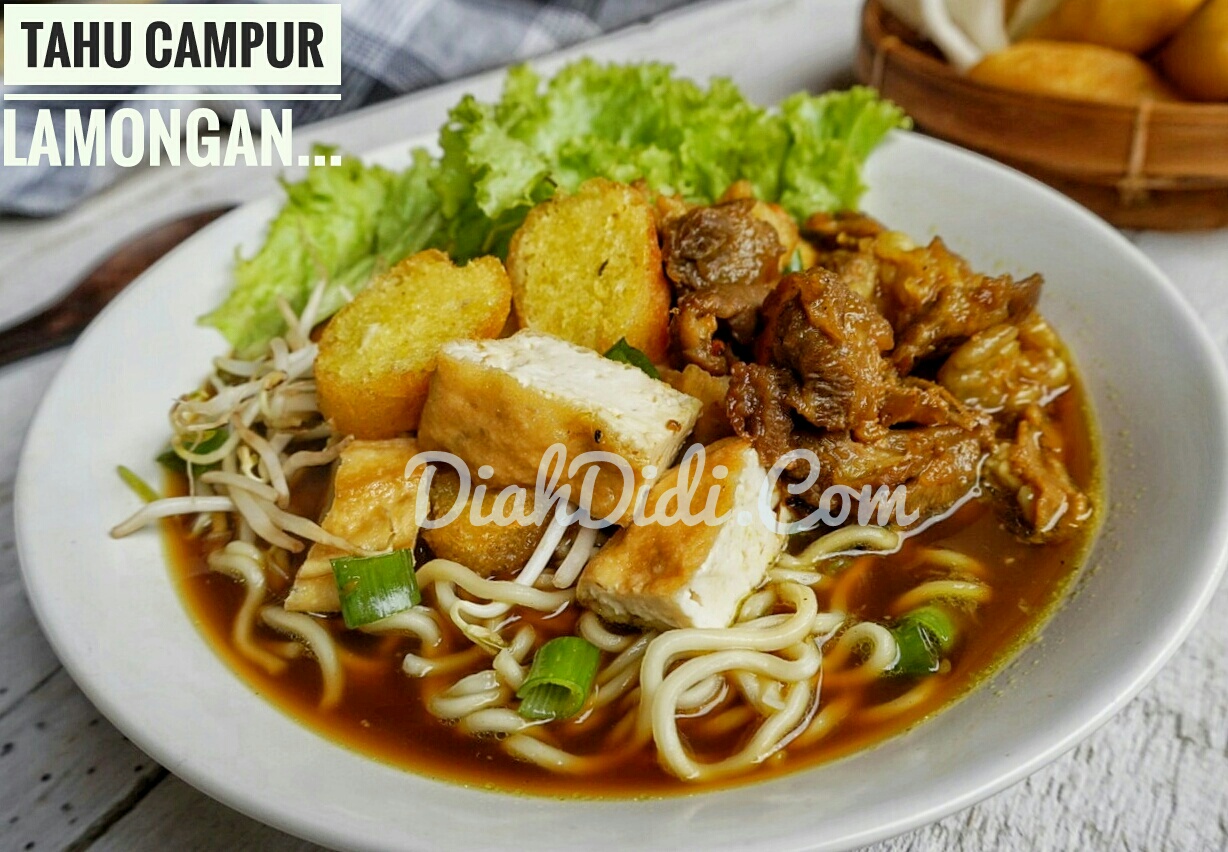
In a world of fleeting culinary trends, Tahu Campur stands as a testament to the enduring power of traditional flavors. It is a dish that is unapologetically bold, complex, and deeply rooted in its culture. To eat Tahu Campur is to taste the very soul of East Java—its history, its resourcefulness, and its unwavering passion for food that doesn’t just fill the stomach, but warms the heart. It is a symphony in a bowl, and every spoonful is a standing ovation.

Article about Tahu Campur. pictures collections gallery
Article about Tahu Campur. is a nice pictures and stock photo for your computer desktop or your smartphone device (ipad, tablet, blackberry, iphone, and other device) and also for your personal use. Free available for desktop wallpaper or additional image collections for your all needs. And was uploaded by admit at date July 1, 2025. You can download it in your computer by clicking download button to save image... have nice day and have fun guys..
This 1 image in featured post from 0 Photos/images Gallery and awesome picture selections about Article about Tahu Campur. is available to download. "Download & Save" images/pictures/wallpapers now and this Is one of the post that listed in packed to Category is Foods directory, with image dimension/resolution size is 750 × 500 px and size image/picture file is 85 KB with original link post ID is : https://powae.pw/of-course-here-is-a-1200-word-article-about-tahu-campur/. Get download/save images in post and gallery, "download" images or "preview" it on a bigger image for spesification sample in Large size (full attachment size) here : [Download & View to Large size]. Just Simple way, in thumbnail or in Gallery. *Click images to view Large Size.We collect this wonderful image from online and choose one of the best for you. Pictures collection that posted here was carefully chosen and published by author after choosing the ones which are best among the others. So, ultimately we make it and here these list of best image for your inspiration and informational reason regarding the Article about Tahu Campur. as part of blogsite exclusive updates collection. So, take your time and find the best informations and pictures posted here that suitable with your needs and use it for your own collection and personal use. About Image information: Image has been submitted and You are able to give your opinion as evaluations to our web site value.
Don't forget to comment if you interest with this images, you can share this post to social media like as facebook, twitter, google+, pinterest, stumbleupon, and more. just click social media buttons for share this post Article about Tahu Campur. Now. :)
Thanks for your visit, I hope you happy come to opo wae, wis opo wae, and get what you're looking for. And hope sometimes you will come back again here. All you need to do is help us develop by discussing this Article about Tahu Campur. if you like it "leave your comment". have fun, Thank you.



